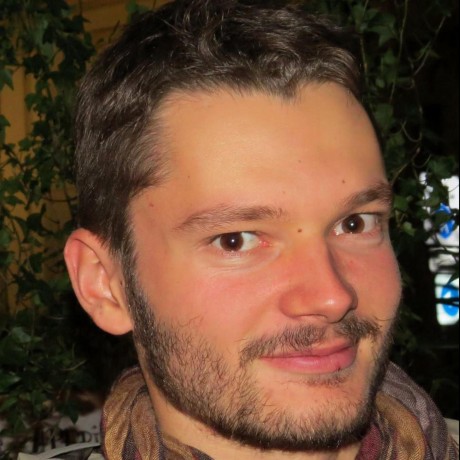Summary and thoughts of the BES/SFE meeting
This week was the British Ecological Society/ Société Francaise d’Écologie meeting in Lille, and as I am sitting on the train on the way home I’d like to give some thoughts and a summary of the various bits and pieces that I got throughout the week.
First I think it important to emphasize that this was the first meeting of its kind, french and english ecologists decided to unit their strength and make a common annual meeting. This gave a collaborative flavor through the whole meeting and as the last plenary speaker said: ”it ensured to have a combination of both good music and great food”. Over the week around 1200 ecologists met and talked.
So now here are a couple of unsorted important informations that sticks out of my notes:
-
Ontogenetic habitat shifts (an insect larvae going from aquatic environment to the land once adult) stabilize higher trophic levels in the modeled systems of Guill (Article)
-
Interaction network modularity is a strong predictor of functional group diversity in Montoya system (website)
-
Indirect mutualism (when two different predator reduce the population size of competing prey allowing them to survive in the environment) was found in the aphids-parasitoid system of Sanders (website)
-
The british have impressive citizen monitoring schemes with the Bird Breeding survey with data being collected for 20 years and the Butterfly Monitoring survey with data for almost 40 years, these dataset will be extremely useful in understanding how anthropogenic pressure will act in affecting species ranges and communities shifts.
-
Pedro Jordano gave a great plenary talk on the interactome, the concept of the interaction network at different scales. As population sizes varies, interaction will disappear before a species goes locally extinct. These lost interaction will impact the ecosystem functions. He and his team uses cool genomic techniques to track which animal species moved seeds from which mother tree, giving them a full mapping of the seed dispersal functions at small and landscape scales.
-
Ecologist uses a variety of data collection approaches from simulations to surveys with field or lab experiments somewhere in between. From simulations to field surveys we have a decreasing gradient of replicability but an increasing gradient of realism. I really feel that our generation of ecologist will have to make use of this vast array of techniques to go back and forth from theory to application of the knowledge generated. These ideas were touched by the symposium on bridging local-scale process to global-scale patterns
-
There was then a fascinating workshop on ecosystem assessment tools organized by Aletta Bonn with three speakers to give the tone of the session: Sandra Lavorel, a scientist advisor at the european commission and the chief scientist coordinator of the UK National Ecosystem Assessment. The return on experience of the UK coordinator was great to hear, how the compartmentalized process of the assessment hindered some of the outcomes. We then discussed of how we ecologist felt about the science-policy interface in biodiversity. A few comments were exchanged on nature valuation that has been shifting in the recent years from purely economically based, and then spoke most of the remaining time about uncertainty. The issue is that policy-maker expect us to throw precise numbers on various scenarios while we understand (yet) little on the processes structuring and (dis)assembling ecological communities and their relation to ecosystem function. A fundamental issue there is that our uncertainty do not only come from our lack of knowledge but also from the inherent stochastic processes affecting natural systems. There is and will always will be some part of the system that we will not be able to predict. There it is very interesting to look at the vocabulary developed by the IPCC in their later report (from high to low confidence) and rooting their main conclusion in probability seems the way to go in biodiversity as well.
-
So far we think that biotic interactions are important only at the local scale, but what if these effects also impact communities at bigger scales? Kevin Cazelles is trying to develop models scaling biotic interactions to larger scales and their effect on species coexistence.
-
Tim Benton gave a great but slightly depressing talk in the symposium on the EU Common Agricultural Policy. His main message was that policy-makers are only interested by stuff that would destroy jobs in the next week to the next year, longer-term trends or catastrophic shifts at farther away horizon are not in their agenda. He advocated for ecologist going out there and talking to the industry or the society because when the demand his shifting (towards organic product, fair trade …), the industries will align themselves to keep their profit and the policy-maker will then follow and make these shifts easier.
-
Stephan Peishl nicely showed in his simulation that individuals at the moving-edge of a species distribution will accumulate deleterious mutations due to lower population sizes. If we find similar results in nature this would have major consequences for species conservation.
All in all this was a great conference, gave me some nice ideas of things to test on my dataset, re-enforced my vision that linking networks to ecosystem function will be a key topic in the coming years, but made me think even more about what role I should/would like to endorse, I will talk more on this in a later post.
Now you might wonder what was my (little) contribution to this conference, I basically talked about the direct impact of plant species richness and the big influence of some plant functional groups on the diversity of our arthropod communities. I received quite a few encouragements of various people finding the story pretty nice and convincing, I got a couple of feedbacks that I will try to check in the coming weeks.
I am pretty tired of this intensive week but am really looking forward for the next one!


Leave a Comment